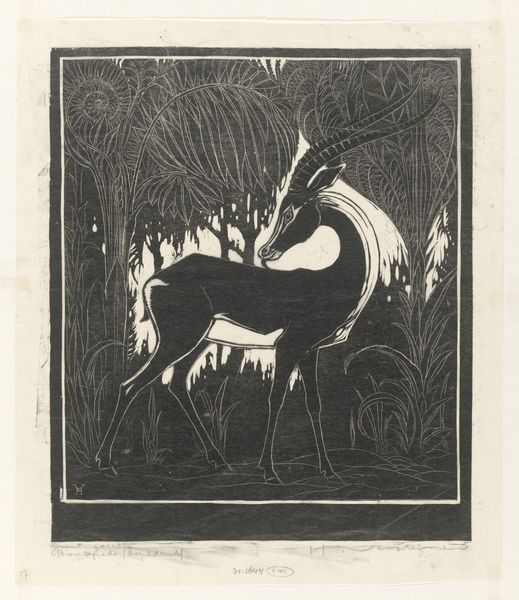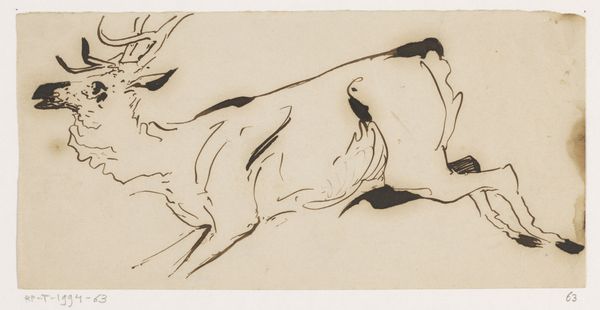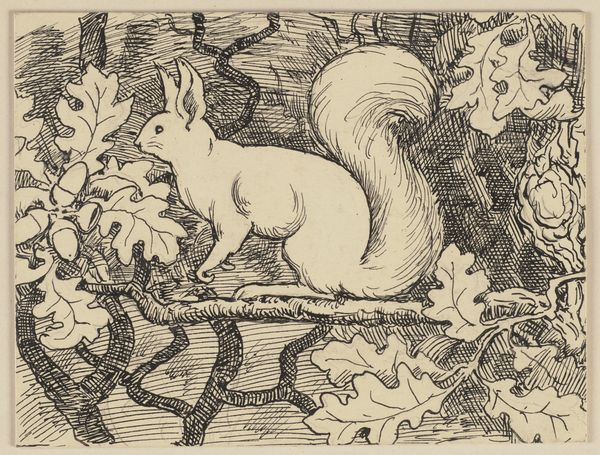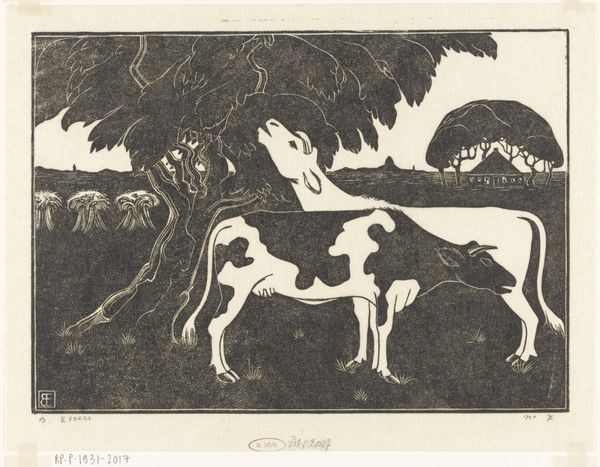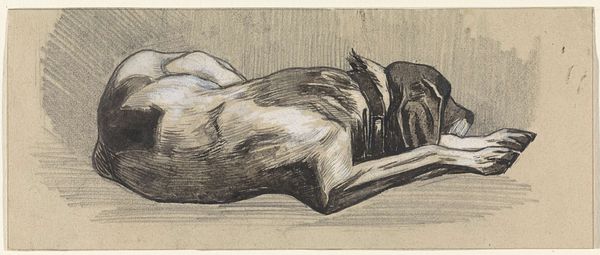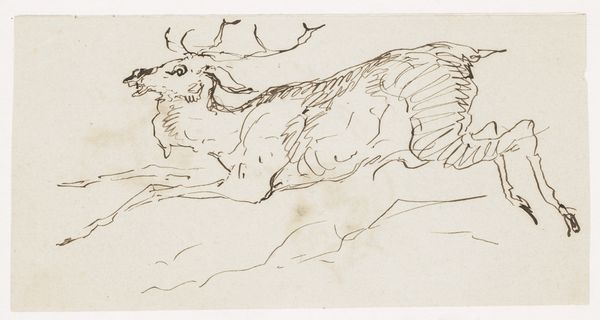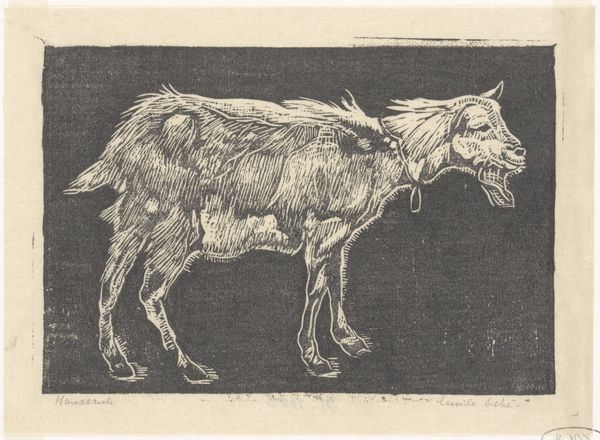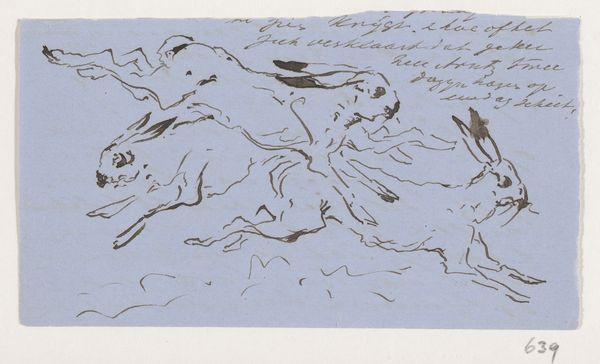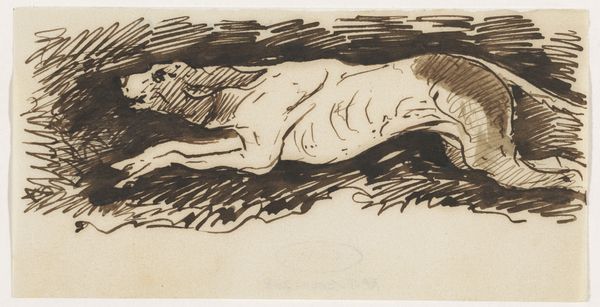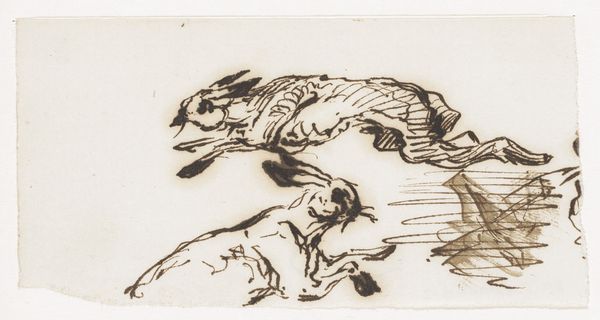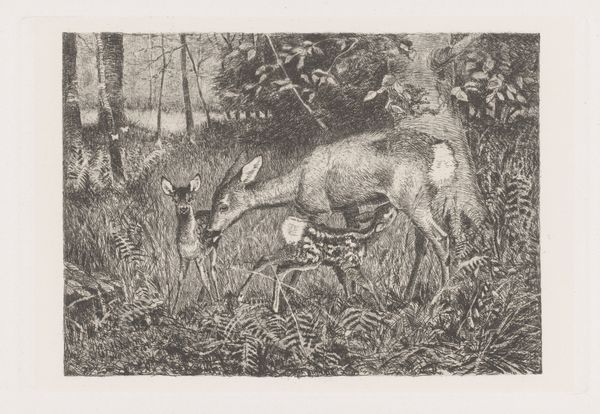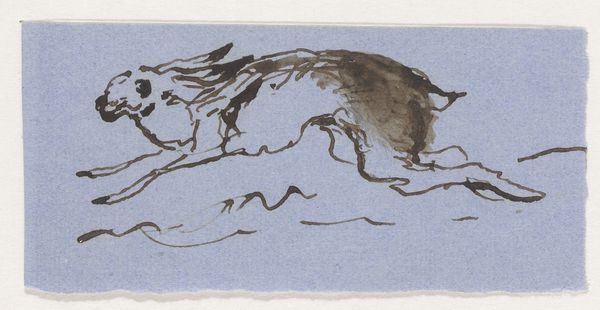
drawing, print, ink, woodcut
#
drawing
# print
#
caricature
#
figuration
#
ink
#
expressionism
#
woodcut
#
line
Dimensions: height 168 mm, width 290 mm
Copyright: Rijks Museum: Open Domain
Editor: This is "Liggende zebu," created in 1917 by Huib Luns. It's a woodcut in ink, currently held in the Rijksmuseum. I’m struck by the sharp contrast between the white lines of the Zebu and the dark background. It's almost a caricature with an exaggerated line. What can you tell me about this artwork? Curator: This piece offers a window into the anxieties of early 20th-century Europe, even within a seemingly pastoral scene. Consider the social context. Luns created this during a period of immense upheaval – World War I. The bold lines, bordering on caricature, move past simple figuration and become tools of social commentary. What statement is Luns making with this almost grotesque rendering of a traditionally docile animal? Editor: Grotesque? I hadn’t really thought about it that way. More stylized maybe? I see the bold lines, but it felt more…artistic choice than commentary. Curator: And what social position does that choice spring from? This “artistic choice” is deeply rooted in Expressionism, a movement that gave visual form to the rising unease and disillusionment following industrialization and war. Notice how the lines don't create a naturalistic depiction, but rather convey a feeling of unease and confinement. Doesn't it remind you of a beast in a cage? What if the Zebu serves as a symbol for something larger – perhaps the working class, oppressed and confined by societal structures? Editor: So you're seeing the Zebu less as an individual animal, and more as a representation of a broader social dynamic. It's about power, who has it and who doesn't? Curator: Exactly. Look at the lines, creating shadows that weigh heavily on the animal, limiting it within its environment. How does that reading shift your understanding? Editor: It makes me reconsider the artist’s intent and think beyond just the aesthetic qualities to explore the sociopolitical commentary. It is much darker than I thought. Curator: Indeed. Art invites us to confront uncomfortable truths, using visual language to dismantle power dynamics and voice unspoken experiences. The dialogue with art evolves through historical contexts and social understanding.
Comments
No comments
Be the first to comment and join the conversation on the ultimate creative platform.
